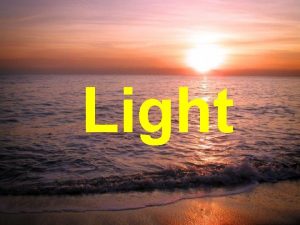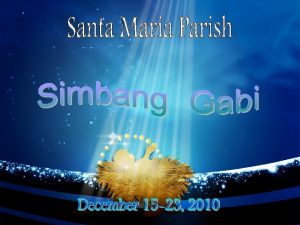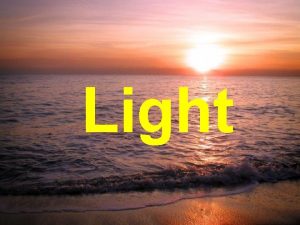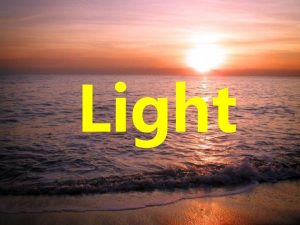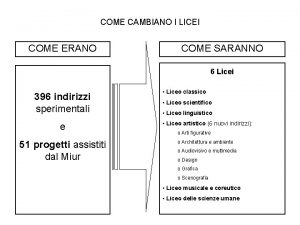Light Where does light come from Light is
















- Slides: 16

Light!

Where does light come from? • Light is the result of _________________ from an energized (usually heated) body of matter. Most often thought of as “visible light”, but electromagnetic radiation occurs over a large _______ of wavelengths.

• Electromagnetic radiation occurs at different wavelengths, from long radio waves, to short gamma rays.

Energy and Wavelength • The energy of the light wave (radiation) is directly related to its _______ and _______.

High Energy Light Waves • Increasing frequency (decreasing wavelength) increases ________.

Chemistry and Light • We have already seen that light emission results from electrons during the excitation from and emission of radiation.

Emission • Emission of radiation (light energy) occurs when an electron drops from an _______ state • Electron absorbs ______ from an outside source (flame, solar radiation) • Added energy causes it to jump to a higher ______ level • Electron is very _____ at the higher energy level and quickly drops back down to its “ground state”, releasing energy as it drops.

Bohr’s Back! • Each energy level has a “_______” amount of energy that each electron occupying it holds. • So, electrons dropping between the same levels ALWAYS release the _____ amount of energy

Energy and Wavelengths • The energy of emitted radiation (light) is directly related to the ________ of the light. Emission Animation Dropping to n=1 : UV Light Dropping to n=2 : Visible Light Dropping to n=3 : IR Light

Emission and Chemistry • Emission is used all the time to determine the elemental composition of samples because each element has a unique set of wavelengths it emits. • The trick is being able to see all of the wavelengths present in a sample of light

Flame Test • Gave signature “colors” of emission for different elements • Limits • Only useful for metals • Need a lot of sample to heat to see the color • Only see color that results from mixture of all the wavelengths present. (What if 2 are orange? !? )

Spectroscopy – Fancy Flame Test • Spectroscopy uses a prism or grating to separate out all of the individual ________ present in a light source

Spectroscopy • The separated wavelengths proved a unique “signature” for each element.

Applications of Spectroscopy • Determining the elements present in unknown samples • Mars Rover (soil/rock samples)

Applications of Spectroscopy • Determining the elements present in celestial bodies • Stars, Gas Clouds

Applications of Spectroscopy • Determining the concentration of solutions • Measures how much light is absorbed by the sample, showing the amount of dissolved molecules present
 Mogan's cevicheria
Mogan's cevicheria How does light travell
How does light travell Precious spirit come holy spirit come lyrics
Precious spirit come holy spirit come lyrics Hey, come on out
Hey, come on out Come thou fount come thou king lyrics
Come thou fount come thou king lyrics Past tear
Past tear E m m a n u e l
E m m a n u e l Come mi chiamo?
Come mi chiamo? Come lord jesus come and be born in our hearts lyrics
Come lord jesus come and be born in our hearts lyrics Come home come home jesus is calling
Come home come home jesus is calling Come mi vedo io
Come mi vedo io Get in touch with god turn your radio on
Get in touch with god turn your radio on Come mi chiamo come mi chiamo
Come mi chiamo come mi chiamo Infinitive past simple past participle
Infinitive past simple past participle Come in come in and sit down
Come in come in and sit down Come in come in and sit down
Come in come in and sit down Light light light chapter 23
Light light light chapter 23

